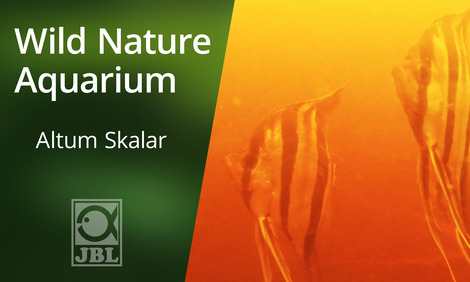The natural habitat of the cardinal tetra
Today we are accustomed to the sight of bright cardinal tetras in the aquarium - it's no longer anything special. But imagine what it was like in 1930 when the first cardinal tetras arrived in Germany. It was a real sensation! For us aquarium owners today, it is a sensation to see and observe these truly beautiful aquarium fish in the wild, in their natural habitats. The first thing you notice is that they do not really move in large shoals. You could almost think that they are loners. Even with a wide-angle lens, you rarely get more than eight fish in the picture. Only when danger appears, e.g. from large Cichla cichlids, do they take cover or form a shoal. Cardinal tetras are never found in open water. That would be too dangerous for them. They always live in shallow water zones, either in really shallow water of only 10-30 cm depth over leaves accumulated on the bottom, which then form their cover in case of danger, or in relatively shallow water of up to 60 cm depth. Then they are only found living close to the shore, where root networks and branches can provide them with cover. Cardinal tetras live in really extreme water values: often neither general hardness nor carbonate hardness can be measured and the pH value is between 4 and 5. We don't necessarily have to imitate this in the aquarium, but of course they don't like really hard and alkaline water either. In any case, they are little jewels in nature and in our aquariums!
JBL Expedition - Research & adventure
Since 2001, the JBL research team has been organising expeditions to the homes of our aquarium and terrarium animals, so that we can learn more about their habitats and breed more species by optimising our aquariums and terrariums. This reduces the number of species taken from the wild, even though it has been proven that capturing the animals does not negatively affect their population. Biotope analyses include light measurements (lux, UV-A & UV-B and PAR value), water analyses (pH; KH, GH, O2, conductance, temperature, Fe, K, salt density & Ca & Mg in seawater), feeding trials, behavioural observations, nocturnal observations and documentation of the habitats in photos and videos. One to two years before the start of the expedition, JBL releases a call for applications to nature enthusiasts on its website. First time applicants are given priority in a draw. In the event of cancellations, repeaters will then move up. The JBL expeditions are a fantastic opportunity to observe fish and invertebrates undisturbed in their biotopes while snorkelling. Of course, this is only possible in clearwater and blackwater. Whitewater, i.e. rivers often coming from the mountains, are usually unsuitable due to their low visibility. The itinerary is organised in such a way that each participant has as much time as possible to observe the animals that interest them most. Indigenous people can usually help us find the right fish locations, e.g. for altum angelfish or freshwater stingrays. Some expeditions are relatively inexpensive to organise, others are considerably more expensive due to complicated travel routes or a lack of infrastructure. JBL passes on the price of the trip without any surcharge from our travel agency partner to the participants. Almost everyone who has been on a trip before signs up for further expeditions. Everyone seems to have really enjoyed it...
The WILD NATURE AQUARIUM format
WILD NATURE AQUARIUM is a new format from JBL that presents the natural habitats of ornamental fish in small documentaries. We have received more and more enquiries as to whether it would be possible to prepare and publish the recordings of our JBL expeditions in a more comprehensive format. The result is now the new documentary series WILD NATURE AQUARIUM. From now on, the biotopes and home areas of various fish species will be presented at regular intervals. Immerse yourself in the underwater world and soak up some exciting facts about our ornamental fish!
